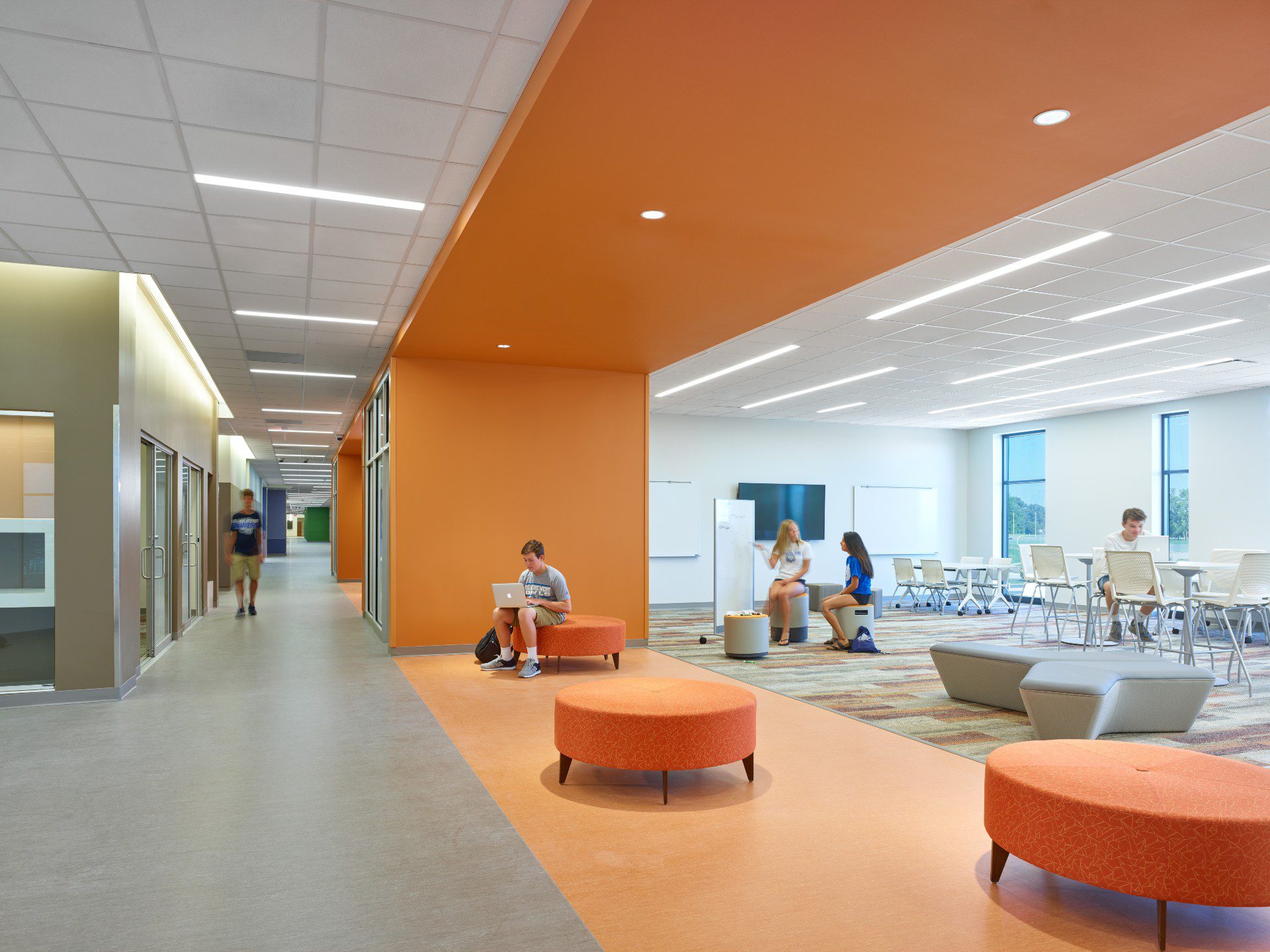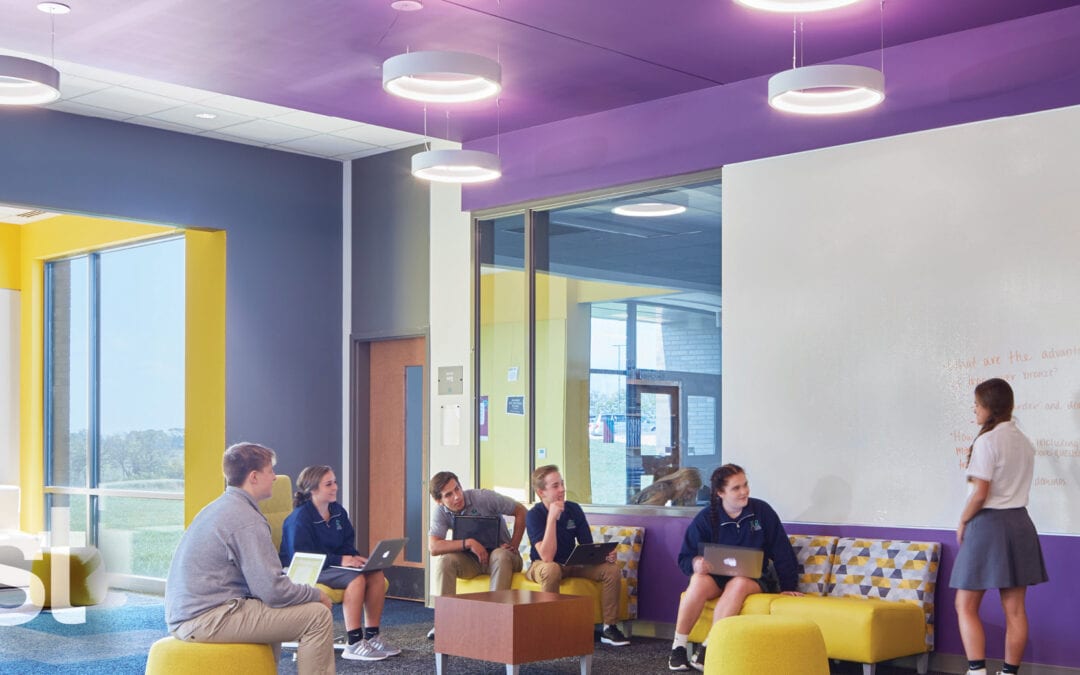Designing learning environments that inspire creativity is Hollis + Miller’s passion, and so we find the most inspiration in the learners we serve. Working with students, teachers, administrators and community members to develop a vision for the design is a first spark of inspiration to start the creative process.
Co-Create: Our Creative Process
We call our creative process Co-Create because it’s designed to engage all members of the team ““ architects, engineers, interior designers, our educational partners and all of their key stakeholders. As learning environment specialists, we believe in empowering communities to enable ownership in the design process. The result is a design that inspires and encourages learners, educators and all community members.
Co-creation isn’t just about how we work with our educational partners, it’s also how we work within our Hollis + Miller team. We engage multiple members of the design team starting at project initiation because we believe that a learning environment is shaped by more than walls and floors. It’s the interior design, environmental graphics, engineering and architecture all coming together to create a space that inspires and nurtures the learner. Our architects, interior designers, graphic designers and engineers all sit alongside each other and co-create a seamless, integrated design.
“We believe in co-creation ““ utilizing the strengths and expertise of all design team members, including our educational partners, to impact design.” said Scott Barton, Partner | Design Director
 Designing for learners
Designing for learners
Education is transforming before our very eyes. Understanding how learning and teaching are evolving in the ever-changing world we live in encourages us to embrace the latest technological advances in both our design process and the finished design.
Designing for the evolving world of education requires creative solutions that can adapt to multiple learning styles, technology upgrades and, sometimes, space limitations. Flexibility and adaptability are paramount in creating environments that can support this ever-evolving approach to creating future-ready learners.
We work with a research-based mindset, striving to know more about how the brain develops and operates and how learners respond to the context of space, curriculum and fellow students. As we co-create space for learning, we’re focused on the whole person, allowing for consideration of important factors such as social and emotional support, a strong learning culture and shifting generational needs.
Drawing inspiration
As the project team, internal and external, establishes the vision, the energy level continues to rise amongst the team members. It builds momentum on itself. We always aspire to create solutions for our educational partners that are beyond their expectations. Creativity feeds a sense of possibility that
helps us achieve those results.
“When we find ourselves at a creative roadblock, we draw what we know. Some of the answers are in the pen, and so drawing is a way for the solution to reveal itself to us,” Barton said.
In those roadblock moments, our team also looks to creative peers to draw inspiration. While we focus on learning environments, we can look to different project types such as offices or retail, disciplines such as graphic or product design, and industries such as film and culinary. Looking to precedent outside our own specialty can spark new  thoughts for us and our designs that will ultimately impact the learners we serve.
Incorporating technology
Technology has empowered our ability to tell stories and visually communicate with our educational partners. More importantly, technology, such as renderings and virtual reality, helps facilitate a dialogue with stakeholders and community members. It allows them to see and experience the design and provide feedback in their words and lets us take advantage of their experience and expertise.
In designing spaces that will work for our next generation of leaders and entrepreneurs, incorporating technology and flexibility for its changing landscape inspire these future professionals to think creatively, which is the most powerful result we strive for.
Hollis + Miller Architects is a more than 100-person architecture and design firm committed to designing the future of learning environments.

